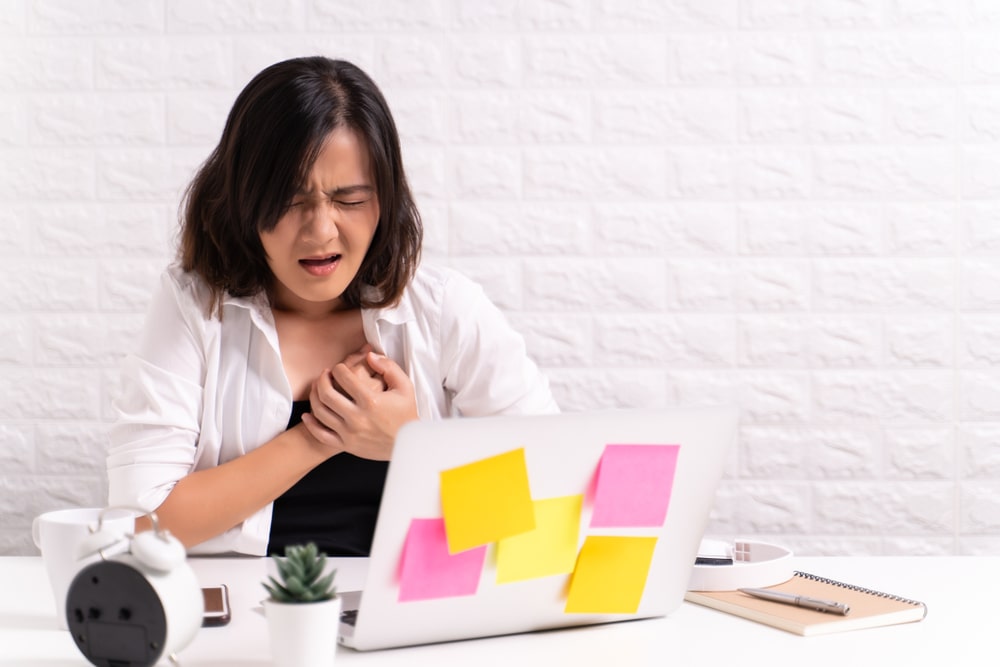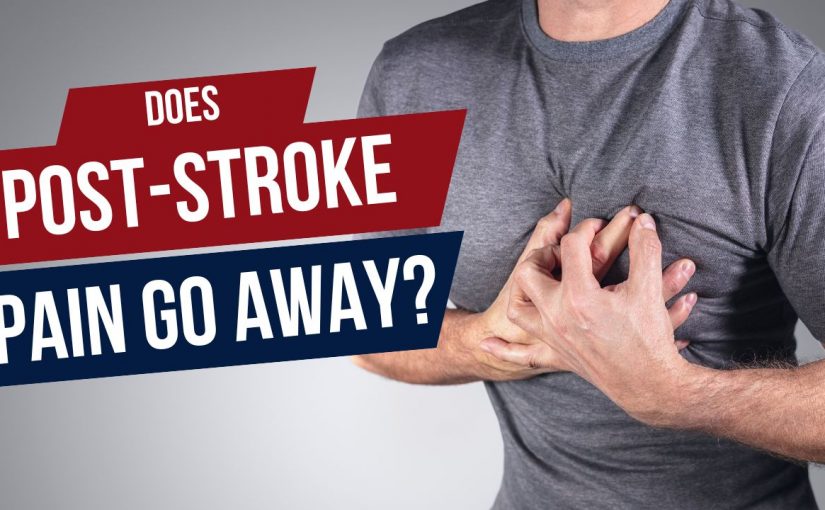Does Post Stroke Pain Go Away?
Post stroke pain, a challenging complication of stroke, arises from damage to the brain’s sensory pathways or nerves. While its persistence varies greatly among individuals, many experience a reduction in pain over time with proper management.
While complete resolution may not always be achievable, strategies aimed at improving pain management and enhancing overall quality of life are crucial components of stroke rehabilitation.
The question “Does post stroke pain go away?” underscores the uncertainty surrounding its duration and the importance of tailored interventions for each individual.
What is post stroke pain?
Post stroke pain refers to pain experienced by individuals after they have suffered a stroke. A stroke occurs when there is a disruption of blood supply to a part of the brain, leading to brain cell damage or death. This can result in various physical and neurological symptoms, including pain.
Post stroke pain can manifest in different forms, including:
- Central post stroke pain (CPSP): This type of pain occurs due to damage to the central nervous system, particularly the thalamus, which processes sensory information.
- Musculoskeletal pain: Strokes can lead to muscle weakness, spasticity, and changes in posture, which may cause musculoskeletal pain.
- Neuropathic pain: Nerve damage resulting from a stroke can cause neuropathic pain, which is characterized by shooting or stabbing sensations.
- Headaches: Headaches after a stroke can be caused by changes in blood flow, medication side effects, or other factors related to the stroke.
Post stroke pain can significantly affect the quality of life for stroke survivors, impacting their ability to perform daily activities and participate in rehabilitation. Management of post stroke pain typically involves a multidisciplinary approach, including medication, physical therapy, occupational therapy, and psychological support. Amidst these strategies, the question remains: Does post stroke pain go away? This inquiry emphasizes the variable nature of post stroke pain.
What are the Symptoms of Post Stroke Pain?
- Post-stroke pain: can present with several symptoms, including:
- Persistent Pain: Chronic, aching, or burning pain often in the affected limb or body part.
- Sensitivity: Increased sensitivity to touch or temperature changes.
- Pain Episodes: Pain that can occur spontaneously or in response to stimuli.
- Muscle Spasms: Pain accompanied by muscle spasms or cramps.
These symptoms can vary in intensity and may impact daily functioning and quality of life.
What causes Post Stroke pain?

Some of the primary causes of post stroke pain include:
- Central Nervous System Damage: Damage to the central nervous system, particularly the brain, spinal cord, or thalamus, can lead to alterations in pain processing and perception. Central post stroke pain (CPSP) is believed to arise from dysfunction in the pathways that transmit pain signals within the brain.
- Musculoskeletal Changes: Weakness, spasticity, and changes in muscle tone following a stroke can contribute to musculoskeletal pain. Altered posture, muscle imbalances, and joint misalignment may lead to pain in the affected limbs or other parts of the body.
- Joint and Soft Tissue Damage: Stroke survivors may experience joint pain or soft tissue injuries due to immobility, poor positioning, or overuse of certain muscles during rehabilitation activities.
- Psychological Factors: Emotional stress, anxiety, depression, and other psychological factors can exacerbate pain perception and contribute to the experience of post stroke pain. Additionally, the emotional impact of stroke and its consequences may influence pain severity and coping mechanisms.
- Headaches and Migraines: Some stroke survivors may develop headaches or migraines following a stroke. These headaches can result from changes in blood flow, medication side effects, or other factors related to the stroke itself.
- Medication Side Effects: Medications commonly prescribed for stroke management, such as anticoagulants, antidepressants, and antispasmodics, may have side effects that include pain or exacerbate existing pain symptoms.
Amidst these considerations, the pressing question persists: Does post stroke pain go away? This inquiry highlights the complexities of managing post stroke pain and underscores the need for careful evaluation and adjustment of treatment regimens to address both the primary condition and associated pain symptoms.
Post stroke complications:
Some common post stroke complications include:
- Physical Disabilities: These physical impairments can significantly impact mobility, balance, coordination, and activities of daily living.
- Communication and Speech Difficulties: Depending on the location and severity of the brain damage, stroke survivors may develop aphasia, a language impairment that affects the ability to speak, understand, read, or write.
- Swallowing Problems (Dysphagia): Damage to the brain regions involved in swallowing can lead to dysphagia, a condition characterized by difficulty swallowing liquids, solids, or both.
- Cognitive Impairments: Stroke can cause cognitive deficits, including difficulties with memory, attention, concentration, problem-solving, and decision-making.
- Emotional and Psychological Issues: Depression, anxiety, emotional lability (rapid mood changes), and post stroke fatigue are common emotional and psychological challenges faced by stroke survivors.
- Spasticity and Muscle Contractures: Muscle spasticity, characterized by involuntary muscle stiffness or tightness, commonly occurs after a stroke. Alongside this challenge, the question lingers: Does post stroke pain go away? This inquiry underscores the multifaceted nature of post stroke complications, emphasizing the importance of addressing not only muscle spasticity but also associated pain symptoms.
Post stroke spasticity:
Post stroke spasticity is a common complication that occurs when there is damage to the brain or spinal cord due to a stroke, leading to abnormal muscle stiffness and involuntary muscle contractions. It typically affects muscles on one side of the body (hemiplegia) but can also occur in other areas.
Spasticity results from disrupted communication between the brain and muscles due to damage from the stroke. This disruption leads to an imbalance of signals that control muscle contraction and relaxation.
Common symptoms of spasticity include muscle stiffness, tightness, and involuntary muscle contractions or spasms. These symptoms can vary in severity and may worsen with movement or changes in position. Spasticity can interfere with mobility, balance, and coordination, making it challenging for stroke survivors to perform activities of daily living.
It may also contribute to joint contractures, muscle weakness, and pain if left untreated. The persistent question remains: Does post stroke pain go away? This inquiry underscores the importance of addressing pain alongside spasticity management for comprehensive stroke rehabilitation.
What helps nerve pain after a stroke?
Nerve pain after a stroke, also known as post stroke pain, can be challenging to manage, but there are various treatment options available.
Medications commonly used to help alleviate nerve pain after a stroke include:
- Anticonvulsants/Antiepileptic Drugs: Gabapentin, Pregabalin, Carbamazepine, Phenytoin, Topiramate
- Antidepressants: Amitriptyline, Nortriptyline, Venlafaxine, Desipramine, Duloxetine
- Physical Therapy: Rehabilitation exercises can improve mobility and reduce discomfort.
- Occupational Therapy: Techniques to adapt to daily activities can lessen the impact of pain.
- Pain Management: Methods like nerve blocks or TENS (transcutaneous electrical nerve stimulation) may provide relief.
- Muscle Relaxants: Baclofen, Diazepam, Tizanidine
- Topical Medications: Lidocaine patches, Capsaicin cream, Topical NSAIDs.
Consulting with a healthcare provider is essential for tailoring treatment to individual needs.
Does post stroke pain go away?

Post stroke pain can vary widely in terms of its severity, duration, and responsiveness to treatment. In some cases, post stroke pain may resolve on its own over time, while in others, it may persist for months or even years.
The likelihood of post stroke pain resolving depends on several factors, including the underlying cause of the pain, the effectiveness of treatment, and individual differences in pain perception and healing.
Here are some key points regarding the resolution of post stroke pain:
- Natural Recovery: In some instances, post stroke pain may diminish or resolve as the brain and nervous system undergo natural healing processes. This may occur gradually over weeks or months following the stroke.
- Treatment Effectiveness: The effectiveness of treatment plays a significant role in determining whether post stroke pain goes away. A combination of medication, physical therapy, occupational therapy, and other interventions can help manage pain symptoms and improve overall function and quality of life.
- Underlying Causes: The specific underlying causes of post stroke pain can vary, including neuropathic pain, musculoskeletal pain, or central post stroke pain (CPSP). The prognosis for pain resolution may differ depending on the type and severity of the pain and the extent of nerve damage or other structural changes.
- Individual Variability: Every stroke survivor is unique, and the experience of post stroke pain can vary greatly from person to person. Factors such as age, overall health, pre-existing medical conditions, and psychological factors may influence the course and outcome of post stroke pain.
- Chronic Pain Management: In cases where post stroke pain persists over the long term, it may become a chronic condition requiring ongoing management and support. Chronic pain management strategies may include medication adjustments, rehabilitation therapies, psychological interventions, and lifestyle modifications to help individuals cope with pain and improve quality of life.
While post stroke pain can be challenging to treat and may not always resolve completely, it is essential for stroke survivors to work closely with healthcare professionals to develop a comprehensive treatment plan tailored to their specific needs and goals.
FAQs:
Does central post stroke pain go away?
Central post stroke pain (CPSP) can be persistent, but its severity may diminish over time with appropriate treatment and rehabilitation. While some individuals experience relief through medications, therapy, and lifestyle adjustments, others may continue to struggle with varying degrees of discomfort. Early intervention and a comprehensive management plan tailored to the individual’s needs can significantly improve their quality of life.
Can post stroke pain occur in the throat?
Post stroke pain can manifest in various forms, including throat discomfort or pain, though it’s less common than other types of post stroke pain like headaches or limb pain. This pain might stem from neurological changes affecting the sensory pathways or muscle control in the throat area. It’s crucial for individuals experiencing any post stroke pain, including throat discomfort, to communicate with their healthcare providers for proper evaluation and management.
How long does post stroke pain last?
Post stroke pain duration varies widely, with some experiencing temporary discomfort lasting weeks to months, while others may endure persistent pain for years. Factors such as the severity of brain injury, individual pain thresholds, and treatment efficacy influence the duration. Early intervention and comprehensive pain management strategies can help mitigate its impact.
What is the best medicine for post stroke pain?
The choice of medication for post stroke pain depends on the individual’s specific symptoms and medical history. Antidepressants like amitriptyline or anticonvulsants such as gabapentin are commonly prescribed to alleviate neuropathic pain.
What does post stroke pain feel like?
Post stroke pain can manifest as various sensations, including throbbing, burning, or sharp stabbing pain. Some describe it as a persistent ache or hypersensitivity to touch in affected areas. It may also be accompanied by numbness or tingling sensations, depending on the nerves affected by the stroke.
Is It Possible to Recover from Post-Central Stroke Pain?
Yes, it is possible to recover from post-central stroke pain, though it varies from person to person. Recovery may involve a combination of medications, physical therapy, and pain management techniques. Some individuals may experience significant improvement, while others might manage symptoms with ongoing treatment. Consulting a healthcare provider is crucial for developing an effective management plan tailored to individual needs.

